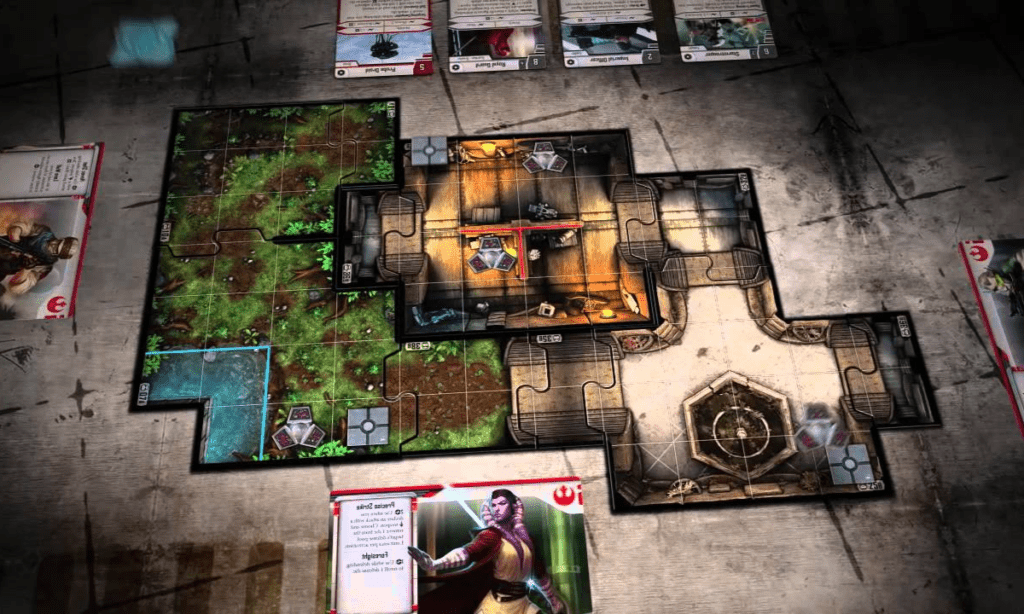RPG board games are a weird topic since they are commonly put under the bracket of Tabletop Roleplaying Games.
It is correct that since this board game is roleplaying in nature and is played on a tabletop, but rather than focusing on roleplaying, there are usually more mechanics involved and more things to do than talk and roll dice.
This genre has been one of my favorites since I learned about TRPGs over fifteen years ago. When I discovered that some games allowed you to play on your own, I dove deep down the rabbit hole and started to play every scenario and expansion I could get my hands on.
I am pleased to share my favorite RPG Board games with you.
Criteria
These are the things I consider when choosing the best of this genre.
- Theme: It must be strong and easily identifiable, though not necessarily fantasy.
- Roleplaying: Players must take on a role, whether a hero or a soldier.
- Story-driven: Scenarios or campaigns that are part of the gameplay, not a backdrop or optional fluff for the game.
- Progression: Whether it comes to deck building or gaining access to abilities and skills, leveling up is the name of the game.
Gloomhaven
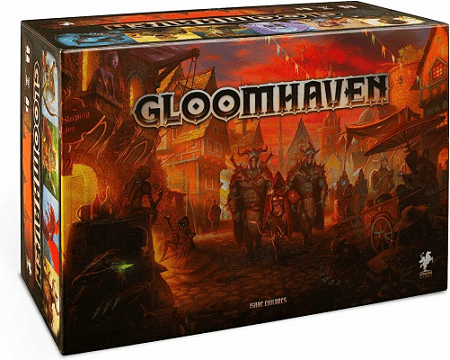
- Number of Players: 1-4
- Gametime: 90-150 minutes
- Theme: Medieval Dark Fantasy Dungeon Crawler,
- Roleplaying: Adventurers or, rather, one of seventeen unique mercenaries. Work alone or with a team as you synergize your abilities to conquer the dungeon.
- Story: Choose your adventure through ninety-five unique scenarios and one massive campaign.
- Progression: Throughout multiple sessions, you will gain and unlock abilities, perks, and gear. You level up and upgrade everything about your character as you clear dungeons and scenarios.
Gather your friends and form ranks because Gloomhaven has many scenarios and a massive campaign for you to explore. Designed by Isaac Chidres and published by Cephalo Games, this medieval dark fantasy has you and up to three of your friends grouping up to explore the dungeon of Gloomhaven.
You can play this game as a series of short scenarios lasting around 90 minutes or as one long campaign lasting for an hour and a half.
The players must band together as a party of mercenaries, developing their abilities and skills represented by a deck of cards each player has. On top of personal decks, you also have the equipment to use on your characters and the synergies you and your team can combine while delving into the dungeon.
While you need to start at level one at the beginning of every game session, you can quickly level up and gain more abilities and skills to stack your deck. Players choose two cards from their hands, one for initiative and another for their action per turn.
Then they go in order against the monsters on the field to see if they manage to defeat them and level up or get defeated and fail the scenario.
The coolest part is how they recycle cards; in this game, discarded cards are not put back into the deck unless an ability does so, or you skip out on the next battle to rest up and recover abilities.
It’s a definite grab for people who like that gritty risk vs. rewards style of dungeon crawl. It has tons of cards to customize your deck with and a solid progression system that only gets more pronounced as you learn the ins and outs of the game.
If ever, the digital version is available on Steam and is much more streamlined due to many automated functions.
Stuffed Fables
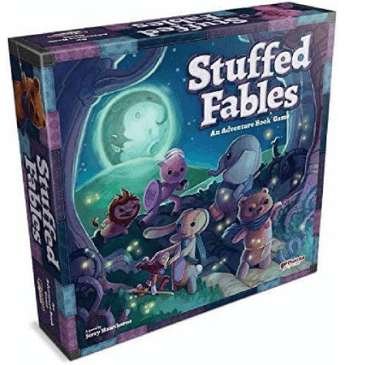
- Designer: Jerry Hawthorne
- Number of Players: 2-4
- Gametime: 60-90 minutes
- Theme: Adventure book, fantasy dungeon crawler based on Fables
- Roleplaying: Take the role of Stuffles, stuffed creatures who have come to life.
- Story: You and your friends take up the role of guardians to rescue your chosen child from the mastermind. It’s an exciting take on bedtime stories and fables, as each turn of the page (literally) lets you discover and solve various points of interest both for your party and the child’s life.
- Progression: Its improvements come with both short-term and long-term benefits. Purple dice and party items can be used in conjunction with your regular turn.
This one is a strange adventure game starring two to four players taking the role of Stuffles, sentient stuffed creatures who are guardians to children. (This is why it’s important always to get your child a stuffed toy)
Here you must get your designated child back from the evil Mastermind. Interacting in this world of stories and fables, this unique take on a board game ensures you are always excited to turn to the next page.
Jerry Hawthorne, the designer for this game, had a clear vision in mind, and with the help of Plaid Hat Games publishing it, you can play this storybook-type fantasy game. Each chapter of the game takes place on the board as you “flip” through; each chapter is a scenario representing a memory or phase in the child’s life.
The board is literally a book as one side is full of segments to interact, fight and explore while the other page contains the rules and explanations for the chapter.
The other unique mechanic of the game is the dice pools and items you can upgrade along the story progression. There are different colors, each able to perform different actions from the other; these dice can be stored, shared, and combined for increased effects.
There are even black dice that spawn and represent enemy actions! Items you can pick up along the way; some can be upgraded, others provide passive effects or are consumed to boost a roll result.
It is one of the most unique and exciting games I have ever enjoyed playing. As childish as the premise sounds, the story and adventure it takes you on are far more profound than it initially seems.
Sword and Sorcery
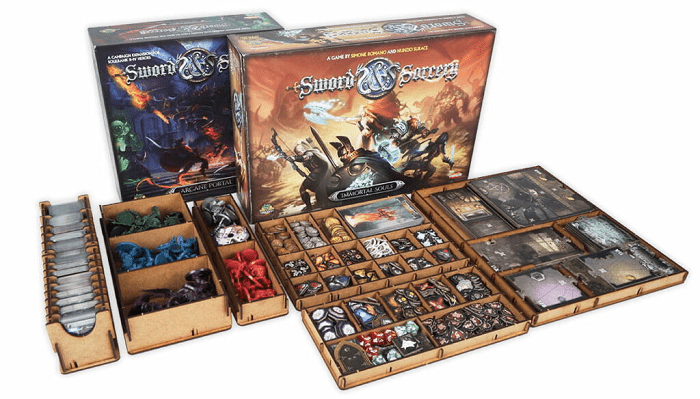
- Designer: Simone Romano, Nunzio Surace
- Number of Players: 1-5
- Gametime: 60-90 Minutes
- Theme: Sword and Sorcery Fantasy
- Roleplaying: Heroes who have been resurrected in a weakened state.
- Story: You are legendary heroes who have regressed since their revival. To save this world, you must regain the power of your Soul and collect the artifacts you once held to defeat the forces of evil.
- Progression: as you battle and collect Soul Power, you unlock former abilities and gain magic and soul weapons. Completing tasks rewards you with artifacts and items that can aid you in future scenarios.
Aside from the title of the game being the exact genre it belongs to, Simone Romano and Nunzio Surace have created a fantastic hour-long experience in this board game. Being one of the more modern types of board games allows one to five players to explore this nearly ruined world yet still has that faint glimmer of hope you players represent.
Published by Ares Games, this board game includes dozens of miniatures, dice, and cards to ensure that you all have something to pay attention to while playing the game.
Play as heroes that have been resurrected, albeit a little weaker than normal. To prepare yourselves to reclaim Talon Coast, you must collect Soul power, relocate your lost artifacts and expand your arsenal to fight the forces of evil.
In doing so, you can rank your Soul level, allowing you to take on more challenging quests and get fatter loot until you can fight the Big Bad.
This game is surprisingly fast, given how many moving parts there are. The monsters more or less follow a set of instructions rather than respond each turn.
The players have an area movement and control type of mechanic that allows easy fighting and an even easier depiction of the board state. This is the closest game that mixes MMORPG and RPG elements onto a board game rather than a video game.
Mage Knight
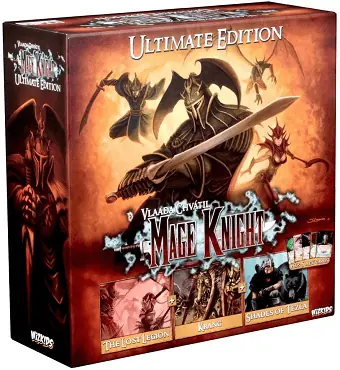
- Designer: Vlaada Chvatil, Paul Grogan, Phil Pettifer
- Number of Players: 1-4
- Gametime: 60-240 minutes
- Theme: Power Building Fantasy (Not Legacy)
- Roleplaying: You play as a legendary Mage Knight, one of seven in the world serving the Atlantean Empire.
- Story: In service to your empire, you are tasked with getting stronger, delving deep into dungeons, and building an army. Once you have a large enough army, you can go out and conquer more land for Atlantis. There is hidden lore in cards as you explore the greater Mage Knight universe.
- Progression: You can get stronger by improving your deck (which is the primary source of actions both in combat and out of combat. You play as one knight who must either improve their reputation and influence to gain followers or their combative abilities to survive dungeons and sieges. Keeping in mind your equipment and the power level of your army, you must balance all of these aspects or rely on teammates to fill in for your shortcomings.
Vlaada Chvatil, Paul Grogan, and Phil Pettifer collaborated with Wizkids to create this massive board game. (literally and metaphorically) you and your friends play as one of four Mage knights, with each player taking one.
While you start weak, you can continually gain power within the scenario to accomplish whatever the Atlantian Empire requests.
The board game is full of hidden lore and world-building, as each card you uncover has a few small sentences attached to it to explain its place in the greater Mage Knight universe.
As you clear quests and explore the scenario’s map, you can fight enemies, interact with the environment, and clear dungeons to gain levels, abilities, and influence. This game lets you power up yourself and gear up an army to maneuver around the map to fight enemies and set up sieges.
This game is one of the best examples of a power fantasy, as you can gain power and influence quickly when planning your moves. It feels great being a commander of a massive army, but it does not detract from being a boss-level hero either.
Even when attempting the more difficult scenarios, you always feel on top of everything, as taking the quest step by step ensures your victory as a legendary combatant. If I could complain, it would be that you cannot carry over the character between scenarios, but that hardly matters with how fast you can level up.
One Deck Dungeon
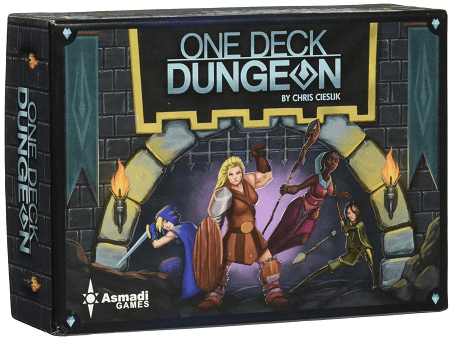
- Designer: Chris Cieslik
- Number of Players: 1-2 (more if there are more copies of the game)
- Gametime: 30-45 Minutes
- Theme: Fantasy Dungeon Crawling Roguelike
- Roleplaying: Adventurers trying to find the furthest depth of the dungeon.
- Story: There is no story; it is a shorter game and more straightforward in that regard
- Progression: As you clear the dungeon, you pick up equipment and items or discard the item to gain experience used to unlock skills and abilities. The further you delve into the dungeon, the more difficult the challenge, but additionally, the more lucrative the rewards.
Designed by Chris Cieslik and published by Asmadi Games, this was initially meant for one to two players. However, with multiple copies of the game, you can add up to two more players per set of the game. The best part is that this game is short and sweet, as a round of the game can be finished in 30 minutes.
Your goal is to clear this dungeon, and while not much story goes into it, you can tell the designer’s focus was to ensure that the game’s mechanics are much more fleshed out to be a fast-paced roguelike dungeon crawler.
The players posing as heroes choose a hero card each and place the appropriate side (either single or multiplayer) facing up. From there, they must build their dice pool and explore together.
While not necessary, I recommend picking heroes with complementary abilities; for example, Rogue and Paladin, to cover each other’s weaknesses while dungeon diving.
You uncover rooms full of monsters or perhaps events that need to be traversed; in any form, the only way to get through it is through the result of the dice.
However, clearing these obstacles will reward you with items you can use either as a consumable to give yourself experience or as the item intended to buff your stats. Experience gives you access to skills and abilities that usually affect the obstacles in the dungeon in a similar but more specialized way as items do.
This is the kind of game you want to bring to a party as it’s fast to play and even faster to teach. Since it’s cooperative as well, it makes sure that everyone can end on a happy note.
Runewars: Revised edition
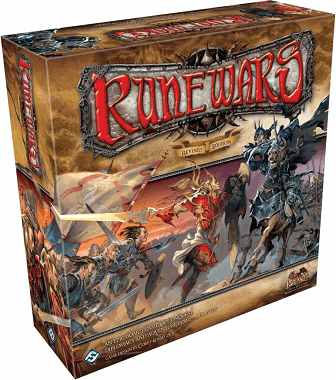
- Designer: Corey Konieckza
- Number of Players: 2-4
- Gametime: 180-240 Minutes
- Theme: Fantasy, Competitive area control game
- Roleplaying: Leader of one of the factions in the Rune Wars, the players are pitted against each other to control the board.
- Story: This is part of the greater universe with the games Descent: Journeys into the Dark, Runebound, and Rune Age. There are characters and monsters that are seen across the other games but no greater story than that.
- Progression: You get stronger as you win more areas, but it also opens up more sides from which to be attacked. You can have more options, but at the same time, it forces you into more challenging situations.
While the original Runewars came out in 2010, the revised edition came out in 2012, Still published by Fantasy Flight Games and designed by Corey Konieckza, the revision ensured that the game was much smoother to go through each phase and less bothersome having to control each unit.
This game takes place in the greater universe of Runebound; more specifically, two to four players take on the role of a faction leader in the titular Rune Wars. All players take control of massive armies marked by miniatures and cards to move them across the board to try and take over the other player’s territory.
What makes it even cooler is that you can mix and match units to create diversity in your army. Units have access to abilities that can help them engage in combat; think of it as specializations that each squadron of units has access to enact your plans without relying on the luck of the dice.
With over 200 figurines, it would be hard-pressed for anyone to find an army they would like to lead, especially since the more territory you control, the more units you can field in your army.
Like the board game Risk, this war game has you strategizing, forming alliances, and ensuring that when you expand your borders you have an army to back it up.
Descent: Journeys into the Dark

- Designer: Daniel Clark, Corey Konieczka, Adam Sadler, Kevin Wilson
- Number of Players: 1-5
- Gametime: 120-160 Minutes
- Theme: Heroes versus Overlord and Explorative Fantasy
- Roleplaying: One player is the Overlord, while the others play as the heroes.
In the same world as Runewars, Decent is more of an explorative fantasy than a war game. Designers Daniel Clark, Corey Konieczka, Adam Sadler, and Kevin Wilson all worked together to create this D&D-esque board game for all kinds of friends to enjoy.
You can see this in their design as whether it is one player soloing or five players teaming up, there must always be a player who acts as the story’s villain. Kind of like a Dungeon Master but less objective and a true antagonist of the game.
Given the nature of the game, it could take two to three hours to complete as the two sides take turns advancing their plans on the board. The Overlord (or villain) must move out of their minions while creating quests and obstacles for the heroes to overcome.
On the other hand, the Heroes slowly level up, gather equipment and chase down the bad guy. To fight the minions, heroes must use up their dice pool, which comprises abilities, weapons, and acquired items.
This story-driven exploration is paired with an insane number of skills and combinations, monsters to face, and adventures to journey through.
It’s a great gateway into TTRPGs since there is far less to prepare for than a DM while simultaneously having a blast balancing your dice pool to ensure that you can get the most excellent combos from the get-go.
It’s a natural descent into the rabbit hole once you get started because It took several hours before we wanted to stop.
Star Wars Imperial Assault
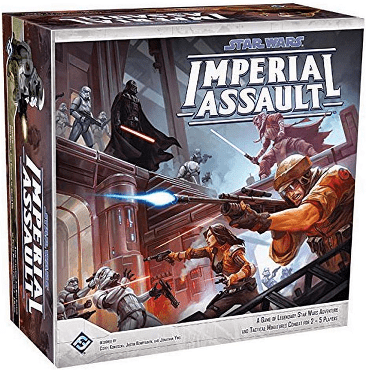
- Designer:Justin Kemppainen, Corey Konieczka, Jonathan Ying
- Number of Players: 1-5
- Gametime: 60-120 Minutes
- Theme: Sci-fi Heroes versus Army
- Roleplaying: You play as heroes of the Rebel Alliance: a crack team of Elites.
Corey Konieczka makes another appearance on this list, but this time with Justin Kemppainen and Jonathan Ying to create this Star Wars adventure. After the destruction of the Deathstar hovering around Yavin 4, you take part in various scenarios as the Rebels try to throw the Empire through all manners of quests.
Much like the previous entry, one player must take the role of the empire, while up to four players can be the rebel squad causing this much havoc. Choose between smaller scenarios or one massive campaign depending on time, but know that you can bring your progress to the next game as long as everyone agrees.
Watch as your rebels go from newbie pilots to Crackshot soldiers and other kinds of professions based on what weapons and skills they take along with them. By completing quests and optional objectives, even you can take part in the massive uprising the Rebel Alliance managed to complete against the Galactic Empire.
Dark Souls: the Board Game
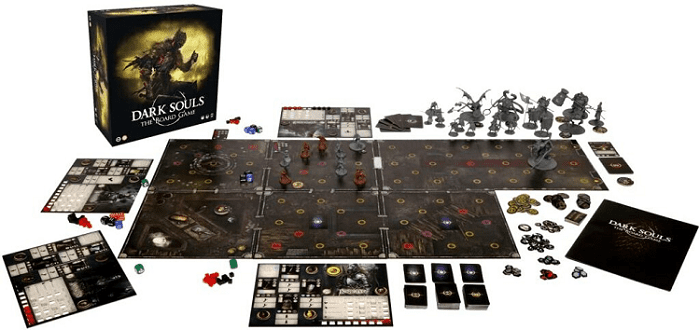
- Designer: David Carl, Alex Hall, Mat Hart, Richard Loxam
- Number of Players: 1-4
- Gametime: 90-120 Minutes
- Theme: Dark Fantasy “Souls-like”
- Roleplaying: You play as the chosen Undead or Undeads if you are with friends.
David Carl, Alex Hall, Mat Hart, and Richard Loxam worked together to bring the Dark Souls experience onto the tabletop, and boy, they delivered.
Playing in the adventure of Dark Souls 1, you and up to three friends take the role of the Chosen Undead. Together you must work to defeat the bosses that stand in your way and link the First Flame.
This game “automates” the monsters allowing the players to focus on their actions and predictions to secure victory. They take turns moving along the map and unveiling the obstacles. Enemies, on the other hand, act according to their stat cards and have rewards stated there as well.
This is one of the best examples of a boss fight done epic since the bosses in this game have that “Live, Die, and Repeat” feel to them, as the only way to defeat them is to learn their patterns and dodge their attacks. It’s excellent for a two-hour adventure deep into Anor Londo.
Darkest Dungeon: The Board game
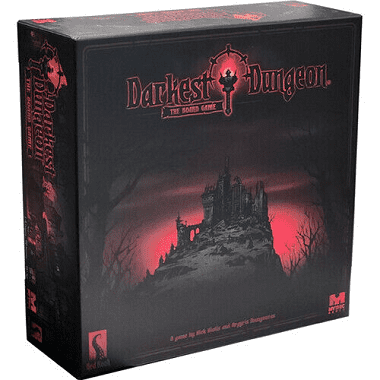
- Designer: Nick Niotis, Argyris Poungouras
- Number of Players: 1-4
- Gametime: 90-120 Minutes
- Theme: Cooperative Horror Dungeon Crawler
- Roleplaying: Adventurers who brave eldritch horrors and monsters while trying to keep their sanity.
- Story: Brought here by the owner, your party of adventurers is tasked with clearing the entire land around the manor and the darkest dungeon itself.
This is another cooperative dungeon crawler with a more eldritch horror twist this time. Designed by Nick Niotis and Argyris Poungouras, this game can be played with one to four players.
Each player controls an adventurer (or, in the case of a solo run, four adventurers) from the video game. With four acts and eleven episodes in the base game, you can encounter something new every time you play.
Players are tasked to explore the various dungeons around the manor to gain experience and upgrades to their characters before being able to take on the Darkest Dungeon.
Collect curios, quirks, and afflictions that help and harm your character. Each time they complete a mission, they level up and upgrade themselves before heading to the next one.
This game can last from one to two hours, and you can keep your character’s progression from one game to another so long as the adventurer does not die. In time you will be ready to face the Darkest Dungeon.
Cthulhu Death may Die
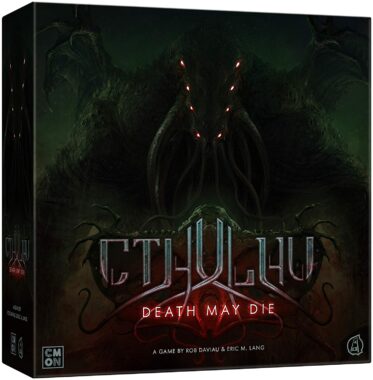
- Designer: Rob Davlau, Eric M. Lang
- Number of Players: 1-5
- Gametime: 90-120 Minutes
- Theme: Eldritch Horror
- Roleplaying: Investigators who want to root out the cultist and prevent the summoning of the Elder Gods.
More Eldritch Horror but of the Lovecraftian variety here in Cthulhu Death may die. Designed by Rob Davlau and Eric M. Lang, this investigative game has you trying to summon the ancient ones to destroy them for good.
You and up to four other friends are insane investigators trying to figure out the clues left behind by past cultists and current supernatural activities.
There are many different episodes, each having its problem and elder god to face, but generally, these episodes are split up into two acts, Pre Summoning, and Post-summoning.
Before summoning, you need to gather clues, spells, and resources that you can use to fend off the minions of the ancient one while also trying to complete the summoning ritual. If you die in this phase, the game ends with the player’s loss.
Post summoning, you are to fight the ancient one to the death, a nearly impossible task, but in your insanity, you found the solution.
It’s an excellent game for those looking to fight gods and face impossible odds for victory. It provides a sense of immense satisfaction as you watch the gods themselves fall before your teamwork. I recommend it so long as the players are interested in uncovering mysteries and defeating the big bad guy at the end of it.
Darkest Nights
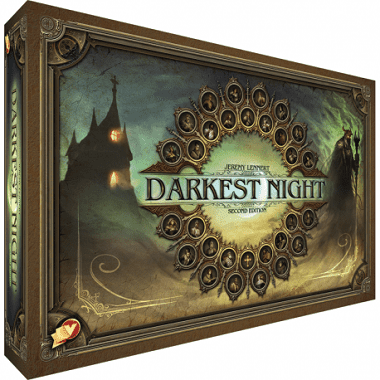
- Designer: Jeremy Lennert
- Number of Players: 1-5
- Gametime: 120-180 Minutes
- Theme: Holding out for a Hero Fantasy
- Roleplaying: The last hopes of the Kingdom, holding out for the chance to strike back and reclaim their home.
Designed by Jeremy Lennert, this game received is every hero aspirant’s best dream. Made for one to five players, you take on the role of the last hope of a kingdom holding out for a hero.
Players must resolve an event each turn before performing any action; from moving to attacking to interacting, everything comes at the cost of time.
On the other hand, once the players are done, the Necromancer can spread his wave of undead and, while moving around, creates more monsters meant to swat you down.
It balances the players’ grinding levels and hunting for equipment and blessings against the Necromancer’s endlessly growing army. It’s a tight game where a misplay could cost you several turns to recuperate or speed up your plans exponentially if the cards are in your favor.
I recommend this for the more experienced players as the game’s massive size and number of pieces may seem too daunting for a newbie to manage.
FAQs
Question: Are RPGs Board Games?
Answer: Not all RPGs are board games, but there are RPG Board Games. These generally imitate the Roleplaying experience or specific aspects of the game.
Question: How do RPG Board Games work?
Answer: Players decide the actions of their character based on the characterization of the character, then the success of their action is randomized through cards, dice, coins, or other methods.
Question: What is the difference between a TRPG and an RPG Board Game?
Answer: TRPGs are open-ended, allowing players to do practically anything they can imagine as long as the GM allows it. RPG Board Games have stricter rules on what can and cannot be done but also have deeper mechanics explained rather than figured out.
Looking for more interesting readings? Check out:
- Best Co-op Board Games – Friends Who Play Together, Stay Together
- Best 2000s Board Games
- Best Gateway Board Games
- Best Ticket to Ride Games Ranked - June 26, 2023
- Best RPG Board Games - March 22, 2023
- Best 2000s Board Games - March 8, 2023

